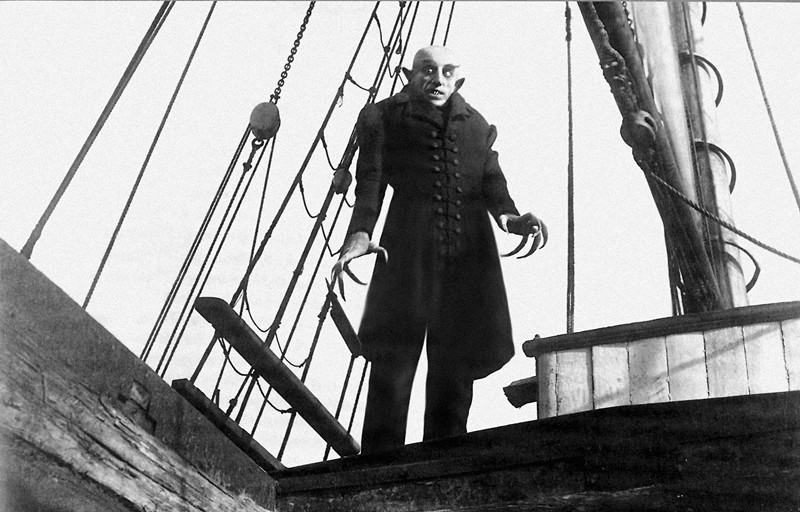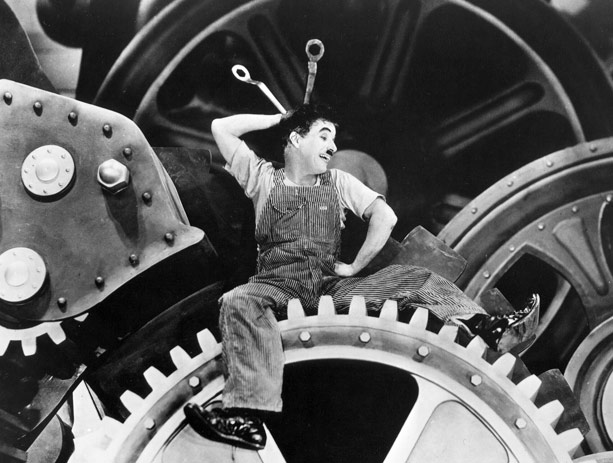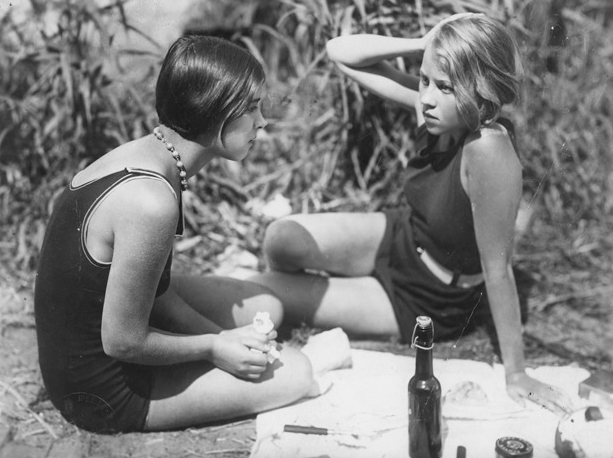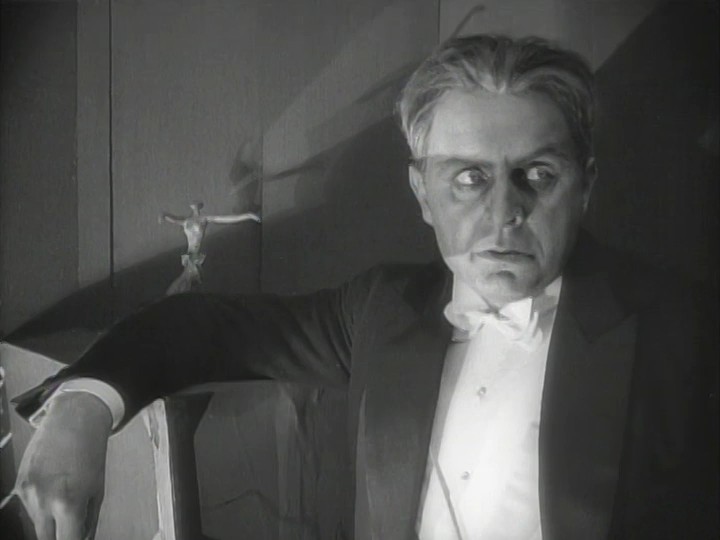5. Nosferatu (1922)

Here’s the one film on this list that most Millennials will have already seen, and with good reason. Nosferatu remains one of the scariest films ever made. Max Schreck is just terrifying as Count Orlock, occupying a seminal place in horror lore.
Nosferatu is the great gateway into silent cinema. It creates and sustains a mood that continues to captivate to this day. Not to mention the film is just riveting from start to finish.
All modern horror owes a debt to Nosferatu. Universal borrowed its creepy atmosphere for its Dracula and Frankenstein films from the early 1930’s, which in turn influenced all American horror from then on out.
F.W. Murnau was the greatest of the great German directors from the 20’s. His subsequent films The Last Laugh and Faust are classics that disserve as much attention of Nosferatu.
4. Modern Times (1936)

Though not strictly silent, this Charlie Chaplin classic is as laugh out loud funny today as it was when it was released in 1936. Just watch the feeding machine sequence and try not to burst into chuckles.
Modern Times represents the apex of Chaplin’s silent films. he would never make another one. In fact, this one was six years out of fashion when it was released. But Chaplin was first and foremost a visual comedian, and Modern Times is chock full of sight gags and stunts that still work eighty years on.
Comedy is one of the great genres of silent film. Chaplin, Lloyd, Keaton, Arbuckle, and others were geniuses who used the medium to stretch comedy into new forms. Modern Times is the perfect film for modern audiences to experience that.
3. People On Sunday (1930)

Have you ever thought that you couldn’t relate with your grandparents? They don’t know what it’s like to be young? This film proves that youth is always youth.
There isn’t much that happens in People On Sunday. A group of friends go to the beach on Sunday, listen to records, and revel in the waning days on summer. But there is more to it than that.
People On Sunday offers an unobstructed view of Germany in the waning days of the Weimar, right before the Nazi take over. It also shows teenagers being teenagers. Those people are just like us. They work in record stores or drive cabs, fall in love, pontificate about life, and just plain live.
They still make movies like these. Andrea Arnold’s recent film American Honey is just the latest in a long line of youth culture movies of which People On Sunday is a fore father.
2. Dr. Mabuse, The Gambler (1922)

Fritz Lang’s Dr. Mabuse is a forerunner for the modern police procedural. Its four and half hour runtime and originally serialized exhibition make it an early forerunner for the television series. So, sit back and binge watch this wild ride through the heart of Berlin.
Dr. Mabuse is a master criminal who uses a number of disguises and hypnotism to scam gambling joints and even the stock market. He also runs a counter fitting ring that is manned by only blind people. Essentially, he is the modern business man.
It is eerie how much Dr. Mabuse resembles our modern wall street fat cats, or even our president elect. He is cold, calculating, and morally weak. His downfall may almost take five hours to achieve, but it is grand and worthy of such a criminal.
Fritz Lang would go on to make many more famous films, including Metropolis, the other gateway silent film, but would never touch the sam seedy heights as he does here. Rudolf Klein-Rogge, Lang’s leading man through much of the twenties, would resist this character again and again, especially in the films Spione and Metropolis. His Mabuse is so startling that is hard not to hypnotized yourself as you view him.
1. Sunrise (1927)

Sunrise is, quite simply, the apex of Hollywood silent cinema. It is a visual feast that tells a delicate story that packs real emotional weight. It was also F. W. Murnau’s first Hollywood film, and his last masterpiece (though Tabu has its merits). It marries together everything that made silent cinema great: sumptuous visuals, glorious in-camera effects, stellar pantomime, and a sense of poeticism that has never been seen again.
Janet Gaynor and George O’Brian (who resembles Ryan Gosling to a T) both underplay their roles so that the they come off as believable, something most silent film actors did not do. But the real star here is Murnau. Sunrise is a bravura performance. it is a magician doing his final stunt. He pulls out all the stops, leaving nothing behind.
Take, for example, the amazing sequence in which the girl from the city tries to seduce George O’Brian to leave his wife and his country home to join her. She waves her hand across the sky and suddenly he sees all the pleasures of the city, jazz bands, bright lights, traffic, etc. It is impossible not to marvel at the technical virtuosity on display.
There are many who say this is the greatest silent film of all time. I have a hard denying that. It is truly a masterpiece among masterpieces. Its simple story only helps the filmmaking flourish. If ever there was a silent film that modern filmmakers should study, it is this one.
Author Bio: David Brimer is a professional musician and writer from Florida. He has toured the world with artists as diverse as Jackson Browne and Hanson, and has published a few short stories in small literary magazines. He is a self-professed cinephile who loves pure cinema.